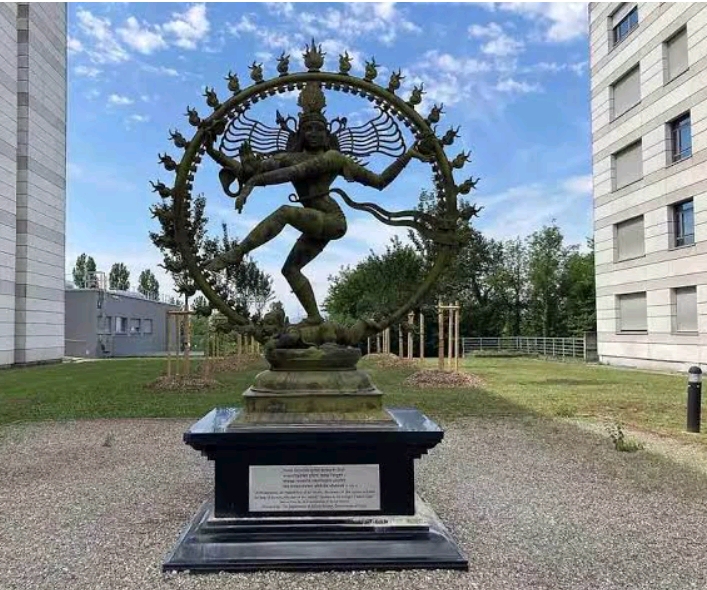In the heart of Geneva, Switzerland, the European Organization for Nuclear Research, commonly known as CERN, stands as a beacon of scientific inquiry. Amidst its state-of-the-art facilities and cutting-edge experiments, one might be surprised to see a two-meter-tall bronze statue of Nataraja, the dancing form of the Hindu deity Lord Shiva. This intriguing juxtaposition of ancient spirituality and modern science has sparked curiosity and led many to ask: Why does CERN have a statue of Shiva?

The Genesis of the Nataraja Statue at CERN
On June 18, 2004, CERN unveiled the Nataraja statue, a generous gift from the Government of India. This gesture was intended to celebrate the longstanding relationship between India and CERN, a collaboration that began in the 1960s and continues robustly today. The statue was chosen not only as a symbol of cultural heritage but also to represent the parallels between the cosmic dance of Shiva and the subatomic world studied at CERN.
Symbolism of Nataraja: The Cosmic Dance
In Hinduism, Lord Shiva as Nataraja embodies the cosmic dance of creation, preservation, and destruction. This dance, known as the Tandava, illustrates the dynamic cycles of the universe, encompassing the continuous processes of birth, life, and death. The statue depicts Shiva with multiple arms, each holding symbolic objects:
- A drum (damaru) in one hand, representing the primordial sound of creation.
- A blazing flame (agni) in another, symbolizing destruction or transformation.
- One hand is raised in the gesture of fearlessness (abhaya mudra), offering protection and reassurance.
- Another points towards his lifted foot, signifying liberation and enlightenment.
Beneath his dancing form lies the dwarf Apasmara, representing ignorance, which Shiva crushes, indicating the triumph of knowledge over ignorance.
The presence of the Nataraja statue at CERN is more than a mere cultural symbol; Physicist Fritjof Capra eloquently drew this parallel, stating, “The Dance of Shiva symbolizes the basis of all existence.” He further elaborated that just as Shiva’s dance creates and dissolves the cosmos, the dance of subatomic particles underlies the physical world, perpetually creating and destroying matter.
The dynamic interactions observed in particle physics mirror the rhythmic cycles depicted in Shiva’s dance, highlighting a cosmic connection between the spiritual and material realms.
The installation of the Nataraja statue at CERN has elicited diverse reactions. Many view it as a harmonious blend of science and spirituality, appreciating the acknowledgment of cultural symbolism within a scientific institution. It serves as a reminder that scientific exploration and spiritual inquiry both seek to understand the universe’s mysteries, albeit through different lenses.
Cultural Significance and International Collaboration
The Nataraja statue stands as a testament to the fruitful collaboration between India and CERN. India’s association with CERN has been instrumental in various research projects, contributing to advancements in particle physics and related fields. The statue not only honors this partnership but also reflects the global nature of scientific research, which transcends cultural and national boundaries.



